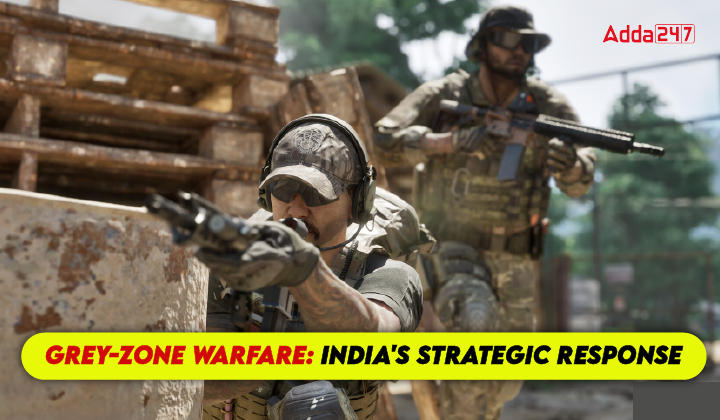Table of Contents
The concept of grey-zone warfare was spotlighted by India’s Chief of Defense Staff at the 9th Raisina Dialogue. The discussion underscored the application of such tactics in the South China Sea and India’s northern frontier, with similar strategies noted against Taiwan.
- Western experts have linked recent maneuvers by Russia and China to grey-zone warfare tactics.
Essence of Grey-Zone Warfare
- Grey-zone warfare employs strategies that don’t meet conventional warfare standards, aiming to covertly weaken foes.
- Notable tactics include China’s incremental territorial encroachment, known as salami-slicing, particularly in the South China Sea.
- This warfare style is characterized by its stealth and ubiquity, lacking clear battle lines, with outcomes often only observable after significant time.
- It poses risks of escalating conflicts across various dimensions, potentially leading to uncontrollable situations.
Principal Tactics in Grey-Zone Warfare
- Cyber operations: Involves activities like data theft, misinformation, and cyber espionage aimed at disrupting without direct physical damage.
- Support for proxies: Providing aid to non-state actors to indirectly achieve objectives without open conflict.
- Economic pressures: Utilizing sanctions and trade barriers to influence the target nation’s economy and policies.
- Information manipulation: Employing propaganda and social media to influence opinions and destabilize trust within societies.
India’s Countermeasures
- Enhanced role of the Chief of Defence Staff for improved inter-service synergy and strategic coherence.
- Military modernization: Embracing technology and innovation, particularly through the iDEX initiative for defense excellence.
- Emphasis on self-reliance in defense production, supported by policies like the Defence Procurement Procedure (DAP) 2020.
- International partnerships: Strengthening ties with allies through agreements such as GSOMIA with the United States.
Strategic Directions for Tackling Grey-Zone Threats
- Establishment of theatre commands for resource efficiency and unified command structures.
- Boosting capabilities in information warfare and special operations to better manage grey-zone challenges.
- Developing advanced surveillance and early warning systems for proactive threat identification and response.
- Demonstrating deterrence capabilities through regular showcases of strength in various domains to discourage adversary actions.
- Clear communication of boundaries and potential repercussions for actions deemed unacceptable by India.



 TSPSC Group 1 Question Paper 2024, Downl...
TSPSC Group 1 Question Paper 2024, Downl...
 TSPSC Group 1 Answer key 2024 Out, Downl...
TSPSC Group 1 Answer key 2024 Out, Downl...
 UPSC Prelims 2024 Question Paper, Downlo...
UPSC Prelims 2024 Question Paper, Downlo...




